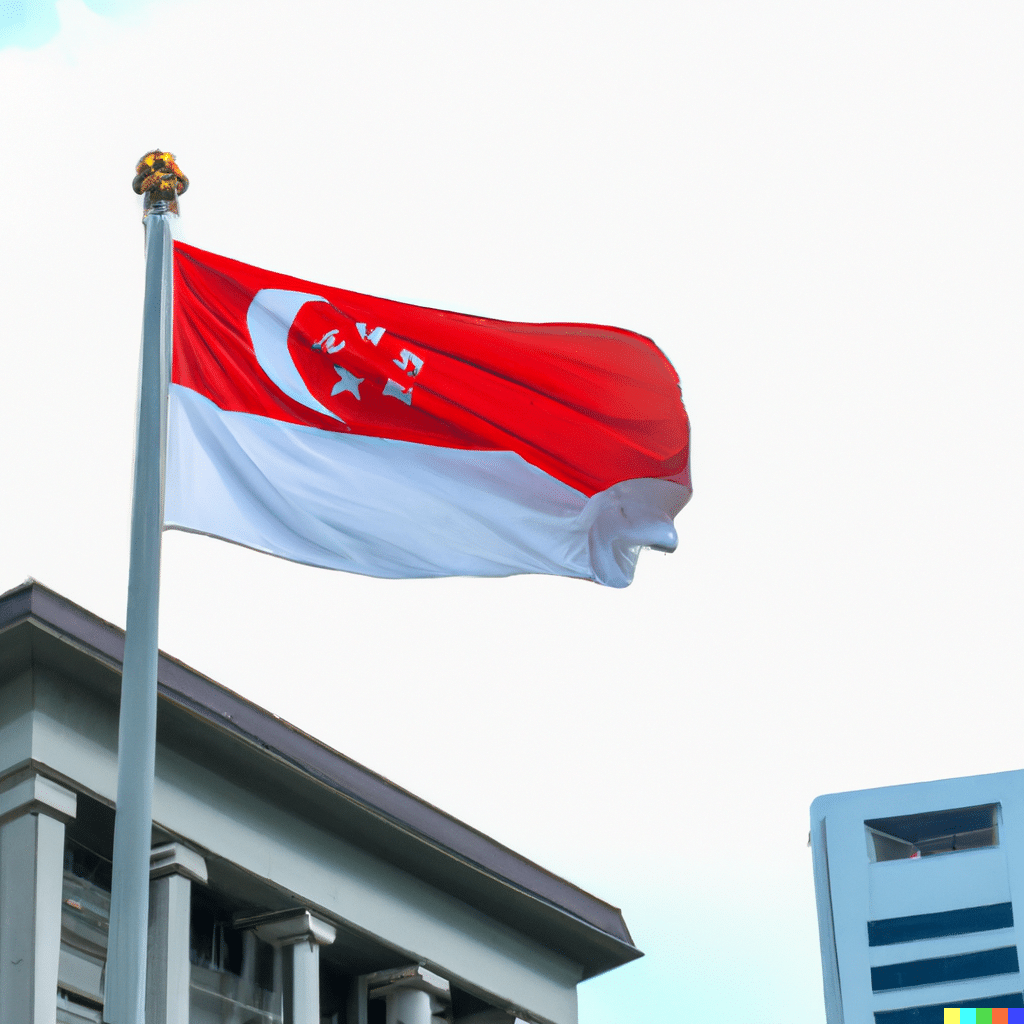The island city-state of Singapore boasts a rich, multicultural history intertwined with its strategic location along key trading routes. But how exactly did this Asian hub come to bear its distinctive name? Singapore’s naming origins and evolution are intricate, pointing to diverse linguistic and cultural influences.
Join me as we trace the linguistic history and analyze the prominent theories explaining how “Singapore” emerged as the destination’s enduring name. We’ll journey through medieval folklore, royal lineages, ancient sea charts, colonial clerks and more to unravel Singapore’s etymological mystery.
Earliest Known Reference to “Singapore”
Pinpointing the first known mention of the name “Singapore” leads us back over 700 years. A 13th century Chinese document called the ‘Description of the Barbarous People’ dating to 1292 contains the earliest written reference.
It describes Singapore as “Pu Luo Chung” in Mandarin and mentions a port settlement trading with China during the late Song Dynasty. Translating the characters as “island at the end of a peninsula” seems to geographically match the today’s Singapore.
A few decades later, Singapore started appearing on old world maps with varied spellings like Singapura or Singapora. A 1360 Javanese epic poem called the “Nagarakretagama” also references a settlement called Temasek that is believed to refer to Singapore.
But the precise origins of the name itself remain steeped in some mystery. Let’s examine the key theories.
The Legend of Sang Nila Utama
One famous origin story comes from the Malay Annals, which chronicles the history of the Malay Peninsula. According to legend, a Prince from Palembang named Sang Nila Utama fled the Srivijaya Empire and settled on an island called Temasek in 1299 AD.
While out hunting one day, he spotted an unusual animal he had never seen before. The creature turned out to be a lion, which he considered an auspicious sign. The Prince decided to name the island “Singapura” – meaning Lion City in Sanskrit.
This founding myth of Singapore has some holes – lions never inhabited the region and archaeological evidence indicates settlement before 1299. But it offers a colorful folkloric explanation for the Lion City name.
Sang Nila Utama’s Symbolic Lion Spotting
Another interpretation is that the lion symbolized authority and wisdom. By creating a myth around lion spotting, Sang Nila Utama invented a tradition to legitimize his royal rule over Temasek.
The lion tied his lineage back to Srivijaya, an influential maritime empire based in Palembang with a tiger as its banner. Claiming a lion sighting allowed Sang Nila Utama to assert his leadership as the Palembang prince who founded Singapura.
So the traditional origin story represents more symbolic myth-making rather than a literal lion encounter. But it provides the Malay language root for Singapore.
Breaking Down the Sanskrit Etymology
Looking at the Sanskrit and Tamil linguistic roots of “Singapore” yields more clues to its naming origin.
The word likely combines “singa” meaning lion with “pura” meaning city. This constructs “Singapura” – the City of Lions in literal translation.
“Pura” itself has origins in ancient Dravidian languages like Tamil before absorption into Sanskrit. It denoted a fortress, town or city in early Indian subcontinent parlance before spreading via trading networks.
So a derivative Indian language combining Singh or Simha for lion with Pura for city plausibly formed an antecedent to “Singapore”, which meant Lion City semantically.
Singapore’s Former Name: Temasek
Singapore was also referred to historically as “Temasek”, which has an entirely different linguistic origin. The Temasek name is thought to derive from Javanese Old Malay, where “Tumasik” meant “sea town”.
This described the settlement’s beginnings as a small fishing village and sea port rather than a grand city. “Temasek” first appears in the Nagarakretagama Javanese epic from 1365 AD.
Between the 14th to 16th centuries, Temasek was likely used more commonly before being superseded by Singapura – especially after the island became the seat of the Melaka Sultanate during its glory years.
Sang Nila Utama’s Alternative Legacy
There exists a competing theory that “Singapura” evolved from the Sanskrit for “Lion City” over centuries of linguistic drift.
Perhaps Prince Sang Nila Utama and his successors ruled over the small sea port of Temasek before it later transformed into the thriving entrepot of Singapura – or Singapore in English.
Rather than literally naming the island, the Sang Nila Utama tale allegorically reflects Singapore’s journey from humble fishing village to prosperous city, inspired by Srivijaya’s Buddhist cultural legacy.
The lion symbolized Singapore’s rise in prominence under its royal stewards, the Srivijaya connection lending them legitimacy. This story became enshrined as Singapore’s founding mythology.
Clues from Old Sea Charts and Maps
Looking further back, Singapore’s presence on navigational maps and portolans from the 14th century onwards provides more hints to its origins.
On early Portuguese sea charts, a settlement called “Sabam” appears at Singapore’s approximate location. One theory suggests this eventually became corrupted to Singapura.
Cartographers also used variants like Sincapura, Sincapur, Singapolo, Chincapula and more over the centuries!
Examining how Arab sailors, Javanese kings, Tamil traders and Portuguese mapmakers labeled the island offers linguistic clues on the name’s evolution.
Examining the “Singha” Root
ljet’s zoom deeper into the ‘Singha’ prefix, which appears derivable to Sanskrit or Old Javanese. But Tamil linguists argue for a Dravidian source instead.
In Tamil, ‘Singam’ refers to the celestial lion figure in Hindu-Buddhist iconography. Many South Indian temples feature statues of divine winged lions.
The name ‘Singapore’ may stem from ‘Singam-pakkam’, meaning ‘lion town’ in Tamil – evolving via usage by Tamil-speaking traders from southern India and Sri Lanka.
Unlike North Indian lions, Singapore had tigers – ‘Puli’ in Tamil. But its founders drew parallels with Indian culture by using ‘Singam’ for the city’s Sanskrit name.
The Case for “Sabam” as the Origin
The ‘Sabam’ theory argues that ancient Arab and Persian maps showed Singapore’s location as Sabam or Saban long before European colonization.
This initial name likely derived from the Malay word ‘Sabrang’ meaning ‘across’ or ‘opposite’ – reflecting its siting vis-a-vis the Riau islands and peninsula.
Over time, Sabam morphologically transformed into Singapore in Western tongues as colonists created English versions from Portuguese transliterations.
Many places evolve linguistically, and Singapore’s name possibly underwent decades of incremental corruption from Sabam to Singapore!
Examining the “Pura” Component
Now let’s examine the ‘pura’ segment, widely analyzed as meaning city or fort in Sanskrit.
‘Pura’ itself has older Tamil roots as ‘Puram’ denoting a fortified town or walled city before adoption into ancient Sanskrit. This provided the ‘pura’ suffix frequently used in South and Southeast Asian city names.
In fact, the Sanskrit name ‘Singapura’ mirrors other ancient city names like Indrapura (today’s Pattaya). This follows a common naming convention.
Both the ‘Singha’ and ‘Pura’ components have versatile applications indicating Singapore’s name combines influences from both North and South India.
Singapore’s Name in Nautical Charts
Another lens to analyze Singapore’s naming origins through is ancient navigational charts used by maritime traders.
On Portuguese and Dutch maps from the 16th and 17th centuries, Singapore was variously depicted as Cincapura, Cingapura, Sincapula, Cincapole, Chingapore and more.
This likely shows corruption of language due to miscommunication between local Malay informants and European cartographers and mariners documenting the region.
Similar evolution occurred with other place names like Malacca. The European lens impacted spelling.
These nautical names underscore the fluidity in conveying exotic Asian toponyms using the Latin alphabet. Singapore’s modern spelling only later stabilized.
Clues from the Local Malay Name “Singapura”
While international documents used romanized versions, locally the Malay name Singapura was already in use when the British arrived.
The Sejarah Melayu chronicles Singapore’s 1300s founding as Singapura by Sang Nila Utama, though written 200 years after the fact.
This Malay name Singapura meaning Lion City became the one adopted by Sir Stamford Raffles when the British East India Company set up a trading post in 1819.
The Malay Singapura appears to have already overtaken Temasek as the island’s main identifier by then.
Standardization Under British Rule
The British and Stamford Raffles are credited with standardizing the spelling as “Singapore”, chosen from the various iterations floating around.
Raffles referred to the island as Singapore in his correspondences. As a linguist proficient in Malay, he liked the symbolism of the Lion City name.
So the British solidified “Singapore” in English while the original Malay Singapura remained in local use, reflected in the island’s coat of arms.
Post-independence, Singapore maintained its anglicized name while also embracing Singapura in Malay and four official languages.
Examining the Chinese Transliterations
Chinese sources over the centuries also used different characters to represent “Singapore”, giving clues to its origins.
Documents from China’s Ming Dynasty in the 1300s use the characters “新嘉坡” pronounced Xinjiapo to refer to Singapore. This translates roughly to ‘new port’.
In modern Mandarin, Singapore is known as “星嘉坡” or Xīngjiāpō, which sounds closer to its English name.
The Chinese names emphasize trade port elements rather than the lion symbolism, showing translation choices in adapting the name’s meaning.
Etymological Theories in Summary
In summary, we find diverse linguistic pathways for how Singapore acquired its name:
- Sanskrit Singapura meaning Lion City, tying back to Palembang prince Sang Nila Utama
- Malay Singapura evolving from the original Sea Town Temasek
- Corruption of Sea Malay Sabang or Saban into Singapura or Singapore
- Combination of Tamil words Singam and Pura, meaning Lion City
- Adaptation and anglicization via colonial Portuguese, Dutch and British chroniclers and cartographers
Which exact etymological route is definitive remains inconclusive. But Singapore’s naming origin channels a rich fusion of languages and cultures.
Singapore’s Name as a Microcosm
Rather than any single theory, perhaps the existence of diverse — even competing — linguistic explanations actually typifies multicultural Singapore’s heritage.
Different names used concurrently reflect Singapore’s reality as a seamless blend of cultures bonded by trade and migration.
Like its diverse demography today, Singapore’s name encapsulates interwoven languages – Sanskrit, Tamil, Malay, Chinese, Javanese, Arabic, Portuguese and English.
Its eclectic name mirrors the society which created it.
Why “Singapore” Stuck
While historically also called Temasek, Sabang, Cingapura and Xinjiapo, why did ‘Singapore’ become the country’s lasting English name?
Several reasons underpin its dominance:
- British adoption and standardization from 1819 onwards made it official
- Alignment to Lion City symbolism appealed to colonial rhetoric
- Shorter and easier to pronounce than alternatives
- Reflected the Malay name Singapura already in local usage
- Anglicization facilitated international commerce and diplomacy
The British played a key role in cementing ‘Singapore’ through perpetuating it administratively, commercially and in international communications.
Singapore’s Name as National Identity
More than just a utilitarian label, Singapore’s name has deep significance for national identity and pride today.
The name captures essence of Singapore’s success story as a cosmopolitan Asian lion city open to the world.
Singaporeans take pride in aspects like:
- Origins as a humble sea port evolving into a global city
- Multicultural heritage blending ethnicities and languages
- Sophistication as a modern metropolis matched with Asian roots
- Visionary leaders with foresight and tenacity like Sang Nila Utama and Raffles
- Lion symbolism signifying courage, resilience, and enlightened rule
Through learning the origins of ‘Singapore’, citizens better appreciate their shared history.
Conclusion
In conclusion, unraveling how Singapore got its name showcases a rich interplay of languages, cultures, mythologies, geographies and rulers.
While historically described as Temasek, Sabang, Xinjiapo, Cingapura or Singapura concurrently, ‘Singapore’ emerged as its globally recognized English name under the British.
But the name’s varied linguistic roots represent Singapore’s cultural diversity, with possible Tamil, Sanskrit, Malay, Javanese and Persian influences intermixed.
Just as its diverse citizens coexist harmoniously as Singaporeans, the country’s polyglot name integrates its multilayered history.

Goh Jun Cheng is the chief staff writer for SingaporeAirport.com. Jun Cheng graduated with a degree in journalism from Nanyang Technological University in Singapore.
He has over 5 years of experience writing about aviation, tourism, and lifestyle topics relevant to locals and visitors in Singapore. His articles provide insights into the rich culture, cuisine, and attractions of Singapore. Jun Cheng is an avid traveler who has visited over 15 countries.
When he is not writing or traveling, he enjoys photography, trying new foods, and hiking. As a longtime Singapore resident, Jun Cheng is passionate about sharing hidden gems and perspectives about his home country.




